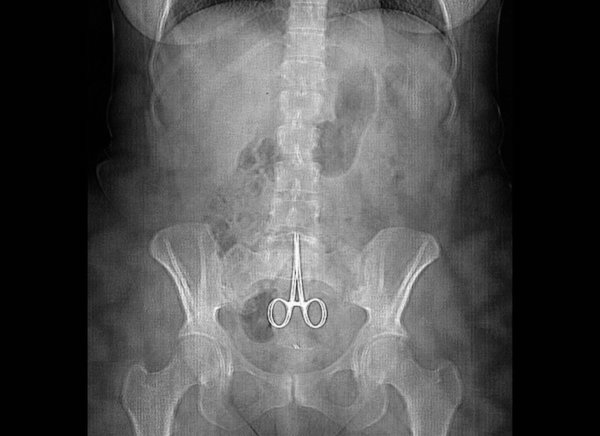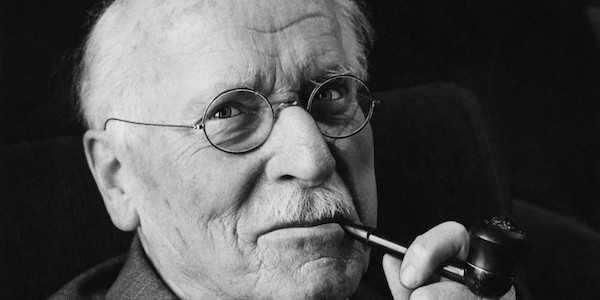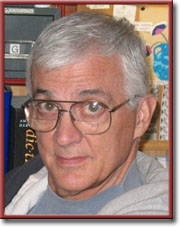Deaf Grasshoppers & Hobbled Ants: Malpractice
“Though only about 15 pecent of American doctors are sued for malpractice, more than 250,000 patients die annually from their doctors’ errors, a statistic that ranks as the country’s third leading cause of death. My own definition of malpractice embraces all of the following: In 1985, my wife was charged $12 for two Tylenols and $50 to transfer her records a half mile, when I, who was never asked, would have provided the drugs and the service at no charge to her doctor.”—Skip Eisiminger
Skip the B.S.
By Skip Eisiminger

“You may melt tin cans/and not burn their labels,/but don’t do everything /just ‘cause you’re able.” —The Wordspinner
CLEMSON South Carolina—(Weekly Hubris)—May 2017—With the junior-high, science-fair deadline looming, Timothy frantically combed the knee-high weeds behind his house for grasshoppers. Back in the garage, he gathered his mother’s wire cutters, a pen, a note pad, and a ruler. With pen and paper at the ready, he clipped off one hind leg flush with the abdomen, yelled, “Git,” measured the leap, and recorded the distance. He did this four more times for each of his subjects and measured each leap. After cutting off the sixth and last leg, yelling “Git,” and failing to see any movement, our rural researcher concluded, “When the last legs is cut off, the hoppergrass, he is deef.”
This illiterate tale is a fiction, of course, but the following is drawn from my non-fiction files. A decade later, “Timothy” washed out of medical school and became an entomologist with a concentration in pismire navigation: how, he wondered, did foraging ants find their way home? Did they simply count their steps as they left the nest and recount them on returning? To test his hypothesis, he divided an ant colony into thirds: to one third, he glued hog-bristle stilts; the second group had half of each leg amputated, and the third group was left as nature intended. After releasing each group near their nest, not far from some breadcrumbs, he was pleased to see that all quickly found the food. However, the return to the nest was problematic: the group on stilts overshot their destination by a factor of two; the amputees made if half-way home before circling in confusion; but the unmolested group went straight home. Thus, “Timothy” concluded, ants have internal odometers.
If entomologists may be divided into students of insects and those who wish to exterminate them, I have to wonder where “Timothy” falls. When I read of his painstaking study, I tried to imagine a grown man holding a squirming ant in one hand and gluing hog bristles to six flailing legs, or worse, trying to amputate precisely half of each flailing leg. How he accomplished that hundreds of times while retaining his sanity eludes me. Mostly, however, I wonder why he never learned that, annoying as flies are, one doesn’t “pay them back” by pulling their wings off? Are there no limits to what one may do “in the name of Science”? I imagine a resounding “no” is how Dr. Josef Mengele slept at night.


“Science doesn’t need/a prod or a dare/turning gold into lead/just ‘cause it’s there.” —The Wordspinner
“Abusement” is a wry blend of “amusement” and “abuse” that I chanced upon in 2007. Though I have yet to locate the word in any print dictionary, it appears to be a synonym for what the French call sadisme, the Germans call Sadismus or Schadenfreude, the English call sadism, and what Schopenhauer called Satan’s laughter. But jokes about a hospital’s oncology wing nicknamed the “Slash, Burn, and Poison Department” do little to assuage the patients condemned to go there.
With the possible exception of pediatricians, it is widely understood that the generally impersonal nature of physicians and scientists, whether innate or acquired, helps them to maintain their objectivity. This is why only one doctor in ten will laugh with a patient in his or her office. After my wife fainted at work and was taken to the nearest hospital, her doctor, a humorless neurosurgeon, breezed in early one morning with an entourage of interns and declared, “This woman may have a brain tumor, but we won’t know until we do an angiogram,” and breezed out. That declaration was the first we’d heard of this alarming possibility. But personality and impersonality aside, I know of no good reason that speculative declaration had to be made in our presence.
Like this surgeon, many scientists have a cold rational streak running long and deep, and worthy of Spock and his Vulcan brothers. In the 18th century, Abbé Nollet arranged 200 Carthusian monks in a circle, had them hold hands, and then delivered a static charge of significant voltage so that everyone leapt wildly into the air. The Abbé’s objective was simply to show that a jump of 200 men could be simultaneously achieved, but I doubt that the monks ever held hands in a circle again.
Nearly two centuries later, Dr. Harry Harlow took infant rhesus monkeys from their mothers and replaced them with steel-wire and terry-cloth dolls fixed to the walls of their cages. Clinging to the terry-cloth doll while feeding from a bottle held by the metal “mother,” all the infants went insane before they died. And this, Harlow said, was done to further the study of maternal love.
Finally, but surely not the last, after Fannie Lou Hamer agreed to surgery in 1961 for the removal of a benign tumor, she emerged from the OR without her uterus. In time, she would bitterly understate the name of this Jim Crow procedure as the “Mississippi appendectomy.” Though she survived the forced sterilization, and reared two orphaned girls to adulthood, her epitaph would read: “I’m sick and tired of being sick and tired.”
Though the vast majority of scientific researchers are decent people, it should not surprise us that the creators of Faust, Frankenstein, Farnsworth, Jekyll, and Strangelove conferred on each a doctorate in the sciences.


“Only a predator/brings a comforter—/a thick, woolen robe—/for a feverish Job.”—The Wordspinner
Related to these sadistic researchers, who mask their own pain by torturing others, are their “masochistic” kin, who, well intended as many are, sometimes flirt on the margins of malpractice broadly interpreted. These are humans of an exceptional order who undergo painful procedures because they are unwilling to risk any life but their own to learn what the body is capable of or how it might be repaired. With few initial advocates, scientific “masochists” accept their isolation, pain, and its associated risks in hopes of finding gold in their leaden experience.
Carl Jung argued that “only the wounded doctor can heal,” and often these wounds are self-inflicted. Brilliant as he was, Isaac Newton apparently did not appreciate the risks of using himself as a lab rat. As a young man, he was so consumed by his work in “Opticks” that he used his own eyes for more than scrutinizing the world. On one occasion, he inserted a blunt needle about an inch long into his eye socket and manipulated the eyeball from beneath and behind to record how the pressure affected his vision. Most agree there was no gold there.
Like Newton, many researchers have used themselves to test new drugs or treatments. Dr. Regine Gries submitted herself to an estimated 180,000 bedbug bites in the process of determining which chemicals attracted or repelled the bugs. Dr. Joseph Goldberger ingested the bodily wastes of pellagra patients to prove the disease is not contagious. It’s caused by poor nutrition. Dr. August Bier had his spine injected with cocaine to test the efficacy of the drug as an anesthesia. To be sure that Bier was numb, Bier’s assistant kicked him in the genitals, and the doctor did not flinch. Finally, Dr. Werner Forssmann ran a catheter from his elbow to his heart to prove it would not kill him. He then walked downstairs to the X-ray lab to take a picture of the achievement that would ultimately win him a Nobel Prize. All of these scientific martyrs took a leaden bullet and turned it to gold. 
“Look the urologist right in the eye and say, ‘Bring me to my knees if you have to, but do a thorough exam.’” —Gen. Norman Schwarzkopf
Though only about 15 percent of American doctors are sued for malpractice, more than 250,000 patients die annually from their doctors’ errors, a statistic that ranks as the country’s third leading cause of death. My own definition of malpractice embraces all of the following:
· In 1985, my wife was charged $12 for two Tylenols and $50 to transfer her records a half mile, when I, who was never asked, would have provided the drugs and the service at no charge to her doctor.
· In 2004, at least 1,500 sponges, clamps, and other detritus were left inside American surgery patients. One Swedish post-op patient went home and pulled a 31” bandage out through his nose.
· In the 1990s, to collect their insurance payments, one Arkansas surgeon told healthy young women they had breast cancer.
· Some doctors in 2010 prescribed Tarceva for patients with pancreatic cancer. One course of the drug costs $26,000. and extends the life of patients by an average of twelve days.
· In 2008, Harper’s reported that 2,266 American veterans under age 65 died because they could not afford health insurance, five times more than the number of soldiers killed in Iraq and Afghanistan the same year.
· In the 1990s, plastic surgeons told women with small breasts they were suffering from “micromastia,” which is “curable,” the doctors said, with implants.
· In 1999, an obstetrician in New York City carved his initials on a patient’s abdomen following a Caesarian.
Malpractice, of course, isn’t restricted to health-care workers: Americans annually, spend more on alcohol and tobacco than they do on health care.
 Dr. Robert Oppenheimer thought the terrible possibility of a hydrogen bomb was, nevertheless, “technically so sweet that you had to go ahead with it.”—Herbert York
Dr. Robert Oppenheimer thought the terrible possibility of a hydrogen bomb was, nevertheless, “technically so sweet that you had to go ahead with it.”—Herbert York
Other than incompetence, revenge, ambition, narcissism, and greed, what motivates any researcher to engage in malpractice? For those like Dr. Oppenheimer, it’s an intellectual challenge that blurs the consequences to humanity. But Hippocrates’ vow, circa. 400 BC, “First, do no harm,” is still excellent advice.

To order copies of Skip Eisiminger’s Letters to the Grandchildren (Clemson University Digital Press), click on the book cover below or contact: Center for Electronic and Digital Publishing, Strode Tower, Box 340522, Clemson SC 29634-0522.


